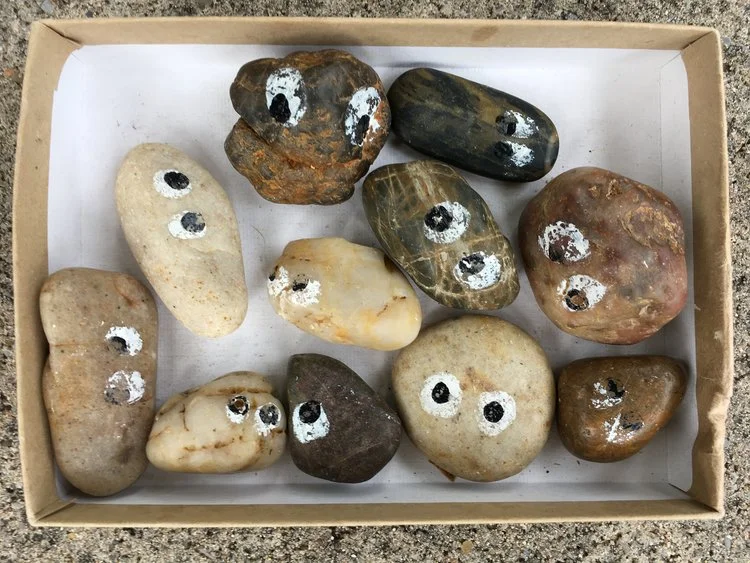“Sets can be changed by adding items (joining) or by taking some away (separating)”
-Erikson Institute’s Early Math Collaborative
My children are very different. One is a rule follower, structured and orderly. The other is more physical and free spirited. One day we were raking the leaves in our yard into two piles. Child #1 carefully added leaves to a pile...which quickly grew!! Child #2 added leaves to a second pile, then stopped, jumped on top of the pile, and threw the leaves around. Whenever her pile diminished (due to so much joyful play) she would sneak over and steal leaves from the larger pile. This back and forth, adding and taking away, putting together and separating was real life math in action!
“Young children’s lives are filled with situations and with beloved tales that pose mathematical problem situations. If we want them to understand how joining/separating...numbers makes sense, we must mathematize those stories. Just as counting is meaningful only if we are counting something, children need to be given many opportunities to experience that every operation tells a story.“ -Erikson Institute’s Early Math Collaborative, 2014
In this activity use storytelling to work on beginning number operation skills. There is no right way to tell the story, just find ways to add or subtract characters then talk about how many.
Playful Invitation
1. Prepare: For this activity I will use a set of rocks with eyes. (these are well loved, and were a favorite of my class and children). You can use any natural material. Draw eyes with a sharpie marker or paint pen if you like.
2. Invite: So I have these little rock guys and I want to tell you a story. Would you like to hear a story? Help me count as I tell the story?
3. Play:
One day there was one little rock guy playing all alone. He was so sad.
Then he saw two friends walking by.
Ask the child: Should we ask them to play?
Friends would you like to play? Yes!
Ask the child: Now how many do we have?
The three friends were having SO much fun and some other rock guys could hear them…so along came two more friends.
Can we play too?
Yes! You can play too!
Ask the child: Now how many do we have?
But then it started to get late and the first rock guy had to leave. Goodbye.
Ask the child: Now how many do we have?
Continue telling the story. Adding and taking away characters.
4. Reflect and Assess: Did the child count to find out “how many?” Was the child able to figure out “how many” without counting (this is called subitizing)? How many characters/materials did you use? Is the child ready to add more characters/materials?
Ready: The child can rote count to five and above. The child uses one to one correspondence when counting.
Ready to move on: The child accurately counts “how many” each time a character is added or subtracted. You may see the child using subitizing (ability to perceive the number without counting) or you may see the child “counting on” from the original number of items when adding. (1 is added to a group of 5. Child counts 5, 6!)
Extend: Ask the child to tell you a story using the materials.
Add additional characters to increase the number being used to 8 and then 10.
Math Language
Number Operations- addition, subtraction, multiplication and division.
One to one correspondence- when counting a set, each item should be counted only
once matching one number word to each item.
Rote count- the ability to recite the count sequence in the correct order without understanding.
Subitizing- ability to quickly perceive a number without counting.
Resources
National Research Council , 2009, Mathematics learning in Early Childhood*
*full citation can be found on the Research Page








